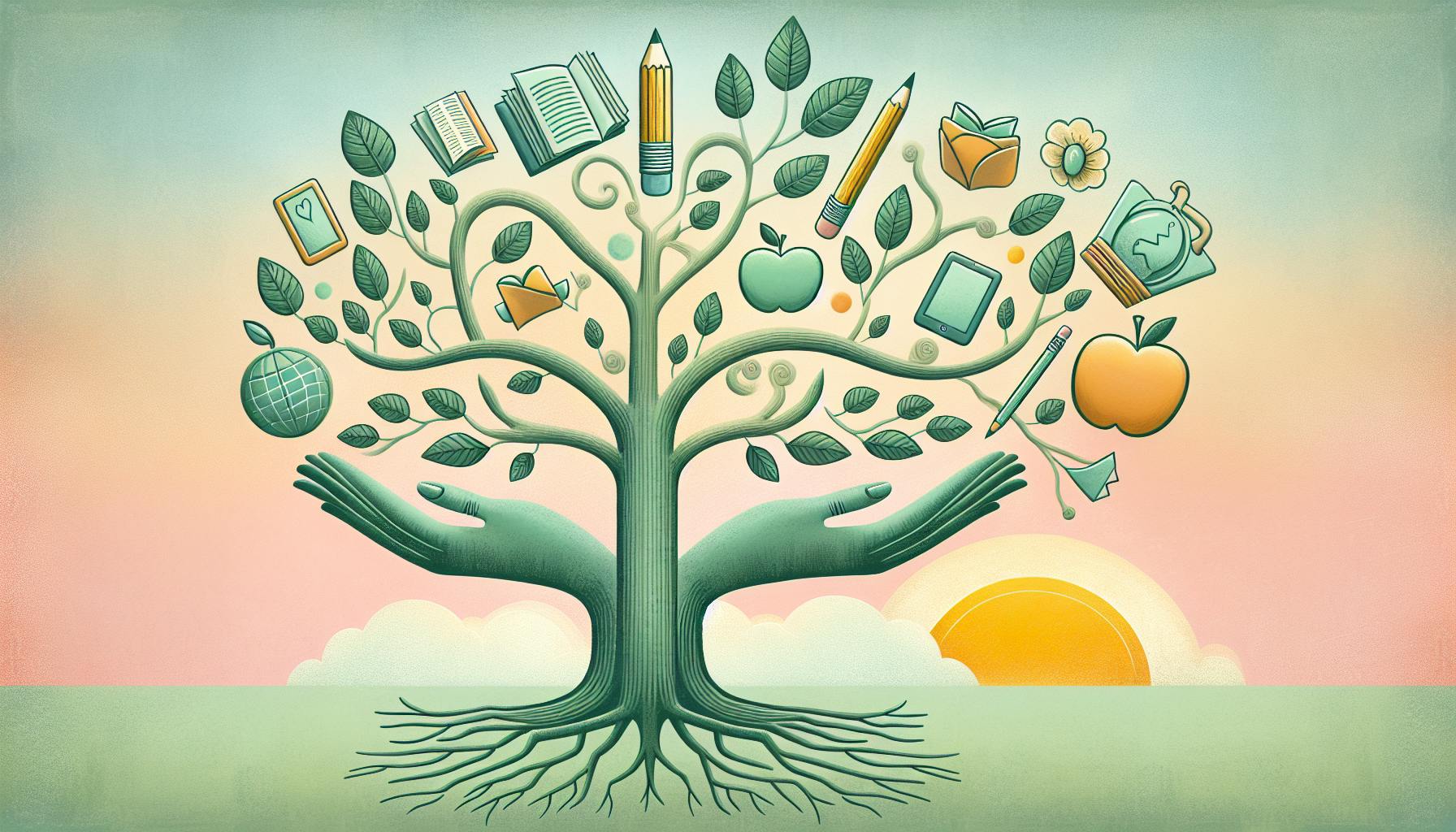As educators, we likely agree that classic coming-of-age stories can provide meaningful life lessons for students.
Teaching J.D. Salinger's acclaimed novel The Catcher in the Rye offers rich opportunities to discuss complex themes with mature students, but it does carry some controversy.
In this review, we'll analyze the plot, characters, writing style, and major themes of Catcher in the Rye, weigh the pros and cons of using it in middle or high school curriculum, and provide sample teaching resources to guide productive class discussion and analysis.
Introduction
The Catcher in the Rye, published in 1951, is considered one of the great American novels of the 20th century. The book tells the story of Holden Caulfield, an angst-ridden teenager who struggles with feelings of alienation and a desire to preserve a childlike innocence in an increasingly complex adult world.
As a staple of high school English curriculums for decades, the novel provides rich fodder for classroom discussion around its central themes of identity, belonging, authenticity, and the loss of innocence. Teachers can use the text to prompt thoughtful debates around Holden's worldview and motivations as well as broader questions about values and ethics in society.
Overview of Plot and Characters
The novel unfolds over just a few days, chronicling 16-year-old Holden's experiences after he runs away from his boarding school to New York City. Over the course of his adventures in the city, Holden interacts with various characters from his past including old classmates, teachers, nuns, tourists, cab drivers and more.
Key events include Holden's encounters with prostitute Sunny and former teacher Mr. Antolini as well as poignant moments with his younger sister Phoebe. Ultimately, Holden returns home ill and checks himself into a sanitarium.
The first-person narrative provides an intimate look into Holden's inner turmoil and conflicted views on innocence, intimacy, and authentic human connection.
Themes and Symbols
Alienation is a major theme, as Holden feels increasingly isolated from peers and unable to connect authentically with others. The novel also wrestles with notions of innocence and morality, as Holden aims to protect children's innocence in the face of what he views as an immoral, corrupt adult world.
Important symbols include Holden's red hunting hat, which represents his desire to preserve childhood, and the catcher in the rye, an image he conjures of saving children before they fall off a cliff into adulthood.
Writing Style and Structure
Salinger employs a casual, conversational style through Holden's first-person narration, which is punctuated by frequent cursing and candid insights. The nonlinear structure moves through flashbacks and stream-of-consciousness reflections, providing an immersive window into Holden's perspective and emotional state.
Is The Catcher in the Rye appropriate for school?
Dear Parents and Students,
You raise an excellent point. While The Catcher in the Rye is considered an American classic, it does contain mature themes that may not be suitable for all high school students.
As educators, we must thoughtfully consider how to balance exposing students to quality literature while also being mindful of each student's age and maturity level. There are a few key factors I consider when deciding if a book is appropriate to teach in class:
- Language - Catcher has frequent use of profanity, which some families may find inappropriate for classroom use.
- Themes - It tackles complex themes like mental health, sexuality, and rebellion against society's norms. Students must have the maturity to thoughtfully analyze these themes.
- Historical context - The book captures the postwar disillusionment of 1950s America. Students with some 20th century historical context will better appreciate the motifs.
While individual families may have varying perspectives, my current stance is that it is better suited for mature high school readers or college survey courses rather than middle school. However, adapted excerpts could still be valuable to analyze specific literary techniques.
I appreciate you raising this thoughtful concern. Please feel free to reach out if you have any other questions!
Sincerely, [Your name]
Why do teachers like Catcher in the Rye?
"The Catcher in the Rye" resonates with many teachers due to its thoughtful examination of complex themes that are deeply relevant to adolescents. As a classic coming-of-age novel, it explores universal questions of identity, belonging, authenticity, and morality that strongly connect with younger readers.
Here are some of the key reasons why teachers appreciate this novel:
- It captures the essence of teenage angst and alienation extremely well through its cynical but sympathetic protagonist, Holden Caulfield. His inner turmoil, confusion, and disenchantment mirror what many students experience.
- The novel promotes empathy by providing an insightful window into Holden's perspective on the world, including his pain, insecurities, and outrage at societal phoniness.
- It sparks important conversations about values, mental health, and the challenges of growing up. The story prompts students to reflect critically on their own lives.
- The themes of alienation, identity, and morality are skillfully interwoven rather than didactically addressed. This makes the novel more authentic and powerful.
- The writing style is highly engaging yet accessible to young readers, with candid humor and simple language.
Ultimately, "The Catcher in the Rye" endures as a favorite for many teachers because it authentically captures the adolescent experience while pushing students to think deeper about life's complexities. Its masterful storytelling promotes rich discussion and self-discovery.
What life lessons does Catcher in the Rye teach?
The Catcher in the Rye by J.D. Salinger offers several meaningful life lessons that educators can extract and discuss with students:
Lying unnecessarily is counterproductive
The main character, Holden Caulfield, often lies or exaggerates reality throughout the novel. This habit stems from deeper personal issues of alienation and discomfort with himself. Teachers can facilitate discussions around the root causes of lying and why being genuine is important for healthy relationships and growth.
Cherish family bonds
Despite his rebelliousness, Holden demonstrates appreciation and care for his younger sister Phoebe multiple times. Educators can highlight the significance of siblings and family who provide emotional support during difficult phases of life.
Maturity happens naturally
Holden resists the idea of growing up and views adulthood with skepticism. Teachers can explore the essence of maturity - it being an inner evolution rather than a race to check societal boxes. Patience and self-compassion help individuals become mature at their own pace.
Relationships require mutual effort
Holden longs for connection but pushes people away by being judgmental. He wants to be understood without doing the work to understand others. Teachers can prompt students to reflect on what makes relationships meaningful - openness, empathy and willingness to meet halfway.
sbb-itb-bb2be89
Why is Catcher in the Rye controversial to teach in schools?
The Catcher in the Rye has sparked controversy in some school districts due to concerns over inappropriate language and sexual content. Specifically, the main character Holden Caulfield frequently uses profanity and frankly discusses his encounters with prostitutes. As a result, some parents and school administrators argue the book is unsuitable for teenage readers.
However, many English teachers strongly defend teaching Catcher in the Rye for its compelling themes that resonate with young adults. Despite his crude language, Holden gives voice to feelings of isolation and angst surrounding the transition from childhood to adulthood. His rejection of societal norms also encourages critical thinking about conformity versus individuality.
While the novel's provocative elements are understandable causes for debate, many contend that censorship goes against the principle of developing students' analytical abilities. With proper guidance, teachers can promote thoughtful discussion about the deeper meaning behind controversial topics in books. This can be an opportunity to strengthen students' abilities to think independently.
In the end, decisions on whether to include Catcher in the Rye on school reading lists involve balancing academic freedom and open dialogue with adherence to community standards. With care and oversight, teachers may determine that the literary merit outweighs concerns on appropriateness. However, those objecting make reasonable arguments that should be judiciously considered as well.
Teaching The Catcher in the Rye
The Catcher in the Rye is a classic coming-of-age novel that explores complex themes of identity, belonging, authenticity, and rebellion. As a teacher, guiding students through thoughtful analysis of the text requires care and strategy. Here are some suggestions.
Student Discussion Topics
Open-ended questions about the novel can promote rich dialogue. Consider prompts like:
- How does Holden's understanding of adulthood evolve throughout the novel? What events trigger shifts in his perspective?
- Discuss the symbolism of key motifs like Holden's red hunting hat. What might this hat represent and why does he cherish it?
- Is Holden a reliable narrator? How might the story differ if told from another character's perspective?
- Does Holden exhibit symptoms of mental illness, or is he simply an angsty teen? Debate using textual evidence.
Sample Essay Prompts
Targeted essay prompts help students practice critical analysis:
- Analyze the role of women characters in the novel. How does Salinger use them to highlight Holden's immaturity?
- Select a key theme in Catcher (identity, authenticity, etc.) and trace its development over the course of the novel.
- Compare Holden's relationship with children versus adults. What might this suggest about his values?
Creative Response Activities
Alternatives like art and writing projects can supplement analysis:
- Create a pictorial map illustrating key story locations and events. Design icons to represent associated themes.
- Compose a diary entry from another character's perspective recounting a pivotal scene.
- Develop an alternative book jacket including symbolic imagery that reflects the novel's core messages.
Discussion questions, essay prompts, and creative responses give students multiple lenses through which to engage deeply with this meaningful text. Adjust approaches as needed to suit your learners.
Assessing Student Comprehension
Evaluating students' comprehension of key ideas, themes and character development in The Catcher in the Rye can be challenging. Here are some tips for teachers on assessing understanding through quizzes, essays, and addressing common student confusions about the novel.
Quiz and Test Resources
- Use plot sequence quizzes to check if students grasp the overall storyline and progression of events. Multiple choice or short answer questions work well here.
- Analyze characterization by having students match key quotes to different characters. This evaluates their understanding of the main characters' personalities, motivations and development.
- Test for comprehension of themes and symbols with quiz questions, essays, or creative projects. Ask students to explain the significance of key symbols like the red hunting hat or interpretations of the novel's messages about identity, authenticity or adolescence.
Grading Essays and Projects
- Develop a rubric or standards for scoring essay responses. Assess factors like how well they analyze characters, understand themes, use text evidence, and structure analytical arguments.
- For creative projects, establish grading criteria to evaluate plot comprehension, depth of analysis, integration of textual evidence, and understanding of literary devices. Use detailed feedback to highlight strengths and areas for improvement.
Addressing Common Confusions
- One plot point students often misunderstand is Holden's inconsistencies and unreliable narration. Clarify that his actions sometimes contradict his stated feelings, which is intentional characterization.
- Another concept students may mix up is Holden's feelings toward sexuality. While he shows some immature attitudes, highlight that he is also troubled by growing up and grappling with complex emotions.
- If students seem confused on themes, revisit key passages that convey the novel's messages about authenticity, identity, and the struggles of adolescence. Connect these big ideas to plot points for clarity.
Conclusion
The Catcher in the Rye provides ample opportunities for rich discussion and analysis in the high school English classroom. As teachers, focusing on the core themes of alienation, authenticity, and the journey into adulthood allows students to deeply connect with the text. Utilizing active reading strategies like annotating key passages prepares students to have meaningful dialogue. Discussion questions that tap into the moral dilemmas Holden faces promote critical thinking. By relating the novel to current events and students' own lives, the lessons become more impactful. Assessing comprehension through creative projects or essays gives students ownership over their analysis. Most importantly, framing the novel and Holden sympathetically, despite his flaws, creates an open interpretative environment. With thoughtful planning and care, The Catcher in the Rye can be a transformative educational experience for high school students. The novel will continue sparking debate and self-reflection for generations to come.


